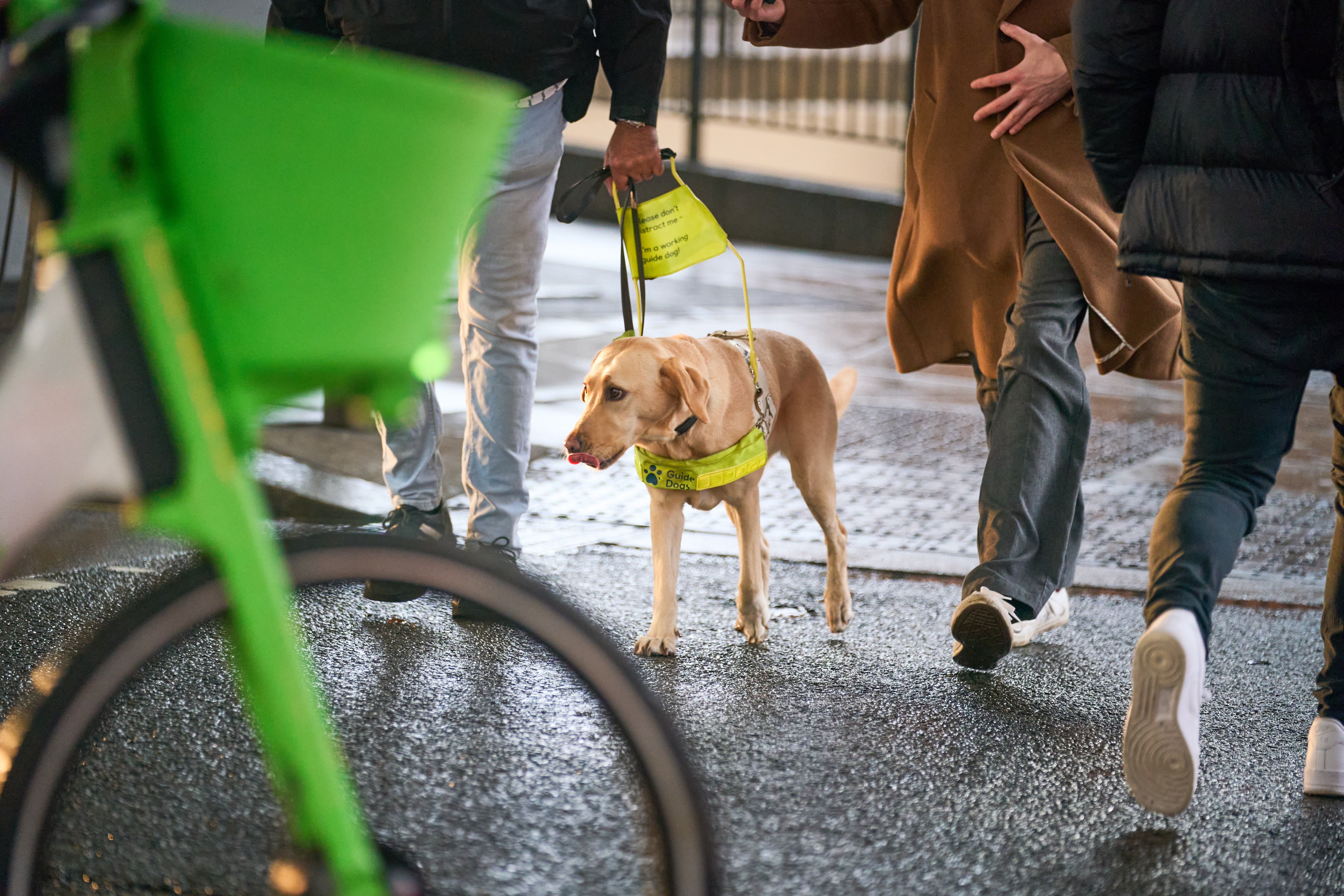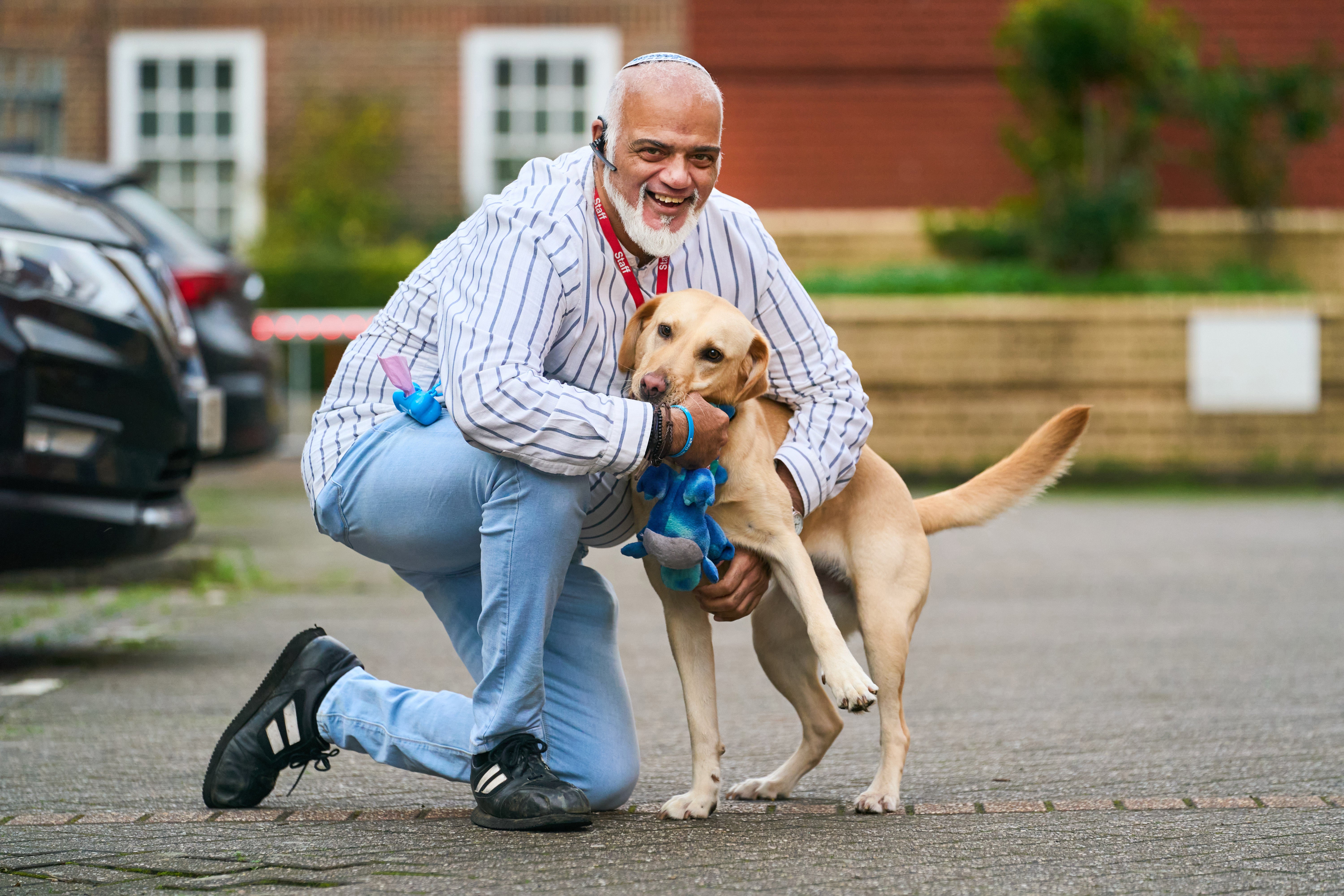Your support helps us to tell the story
From reproductive rights to climate change to Big Tech, The Independent is on the ground when the story is developing. Whether it’s investigating the financials of Elon Musk’s pro-Trump PAC or producing our latest documentary, ‘The A Word’, which shines a light on the American women fighting for reproductive rights, we know how important it is to parse out the facts from the messaging.
At such a critical moment in US history, we need reporters on the ground. Your donation allows us to keep sending journalists to speak to both sides of the story.
The Independent is trusted by Americans across the entire political spectrum. And unlike many other quality news outlets, we choose not to lock Americans out of our reporting and analysis with paywalls. We believe quality journalism should be available to everyone, paid for by those who can afford it.
Your support makes all the difference.
When David Isaac lost his sight, he withdrew from the world.
“I cut myself off from friends, from family. I was in a really dark place,” he says. “I was a very social person before I lost my sight, and then all of a sudden I was very much in isolation.”
I met David at his house in Hammersmith, where he lives with his wife. Rye also greets me; she’s David’s guide dog, an energetic golden Labrador. He has been blind for 15 years following complications with diabetes.
When he first lost his sight, he learned to walk with a long cane. He talks candidly about the experience.
“You can hear people say, ‘Careful, there’s a blind person, move out the way,’” he says. “They literally part like the Red Sea, and I could be out all day and talk to no one.”
Guide dogs are well known for their mobility assistance, but David says their impact on his mental wellbeing has been just as profound.
“With a guide dog, I can walk down the street and, guaranteed, I’ll be stopped at least half a dozen times,” he says. “All of a sudden, I’ve got that social interaction that blindness took away from me.”
David partnered with his first guide dog, Scooby, eight years ago. He died on Christmas Day last year. Scooby’s picture hangs at the foot of the stairs. David is not one for sentimentality, but occasionally he slips and refers to Rye, a female, as “he” or “him.” A year on, Scooby still occupies a space in his mind.
When Rye is in harness, her focus sharpens. She lies beside David’s chair as he prepares to leave.
We walk to David’s workplace at a local council building—a 30-minute journey through the chaos of London rush hour. Two cats dash across our path, a Pomeranian lunges and barks, and a child makes a grab for Rye. She ignores them all. She pauses at kerbs and zebra crossings, guides David around obstacles, and even accounts for hazards at head height. Navigating a tree-lined street, she skirts the uneven dips between paving slabs and roots.
David occasionally adjusts their route to test Rye’s focus. At one crossing, he coaxes her to walk on instead. “Not today, young lady.” He maps the area in his head and supplements his knowledge with apps like Soundscape, which use 3D audio to describe surroundings. Still, it is trust in Rye that keeps him safe.

For a moment, that trust is on display. A car stops in the middle of a crossing. David commands Rye to walk, but she stays put.
“Sometimes I rely on her to keep me safe, sometimes she relies on me to keep her safe,” he says. Similar scenarios have left him stranded at crossings for several cycles of the lights. With a cane, the risks can be even greater. “You have to walk into an obstacle to know it’s there.”
At the office, Rye curls up in her bed with a toy. With time to spare before David’s first meeting, we discuss the challenges of handling a guide dog.
“You quite often get people that will see the sign that says ‘do not distract,’ realise that I can’t see them and think, well, you can’t see me anyway, so I’ll just lean down and fuss the dog.”
Petting Rye while she’s working is a recurrent problem—and a dangerous one. David enjoys the sociability Rye brings, but there are boundaries.

“At the end of the day, if somebody wants to fuss her, she will lean in,” he says. “They’re not robots.”
When I suggest that the bond between handler and guide dog seems almost human, David laughs.
“Better,” he says. “A guide dog would love you unconditionally. Humans don’t do that.”
Guide Dogs—the charity that provided Rye—is a network of volunteers and specialists. First, a dog breeder provides puppies, a complex task; the character of a dog is heavily impacted by its genetics. Puppies then go to a breeding centre for inoculations, then a puppy raiser, where they learn socialisation skills.
Next, they go to puppy school, where a foster volunteer lives with the dog and takes them to a training school for lessons. The training for one dog takes years and a large number of the steps involve unpaid volunteers.
Guide Dogs is training more dogs to help the 2 million people in the UK living with sight loss. The charity needs more volunteers to help raise these life-changing guide dogs. For more information about volunteering for Guide Dogs, visit guidedogs.org.uk/volunteer.


